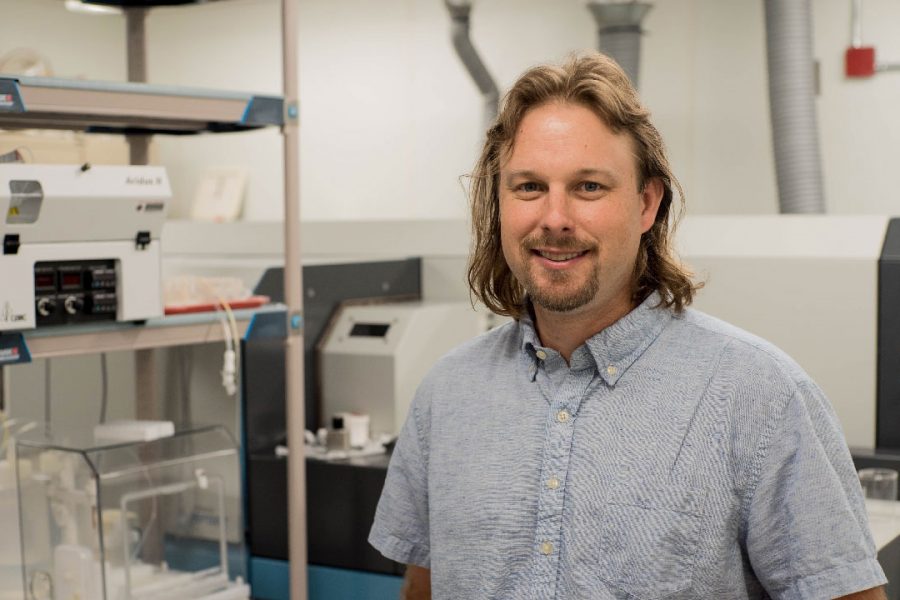
A 94-million-year-old climate change event that severely imperiled marine organisms may provide some unnerving insights into long-term trends in our modern oceans, according to a Florida State University researcher.
In a study published today in the journal Science Advances, Assistant Professor of Geology Jeremy Owens traces a 50,000-year period of ocean deoxygenation preceding an ancient climate event that dramatically disturbed global ocean chemistry and led to the extinction of many marine organisms. He also draws parallels to similar rates of oxygen depletion observed in our contemporary oceans.
“We found that before this major shift in the climate, there was a stretch of oxygen depletion of about 50,000 years,” Owens said. “The rate of deoxygenation during that time is somewhat equivalent to the rate at which many scientists suggest we’re losing oxygen from our oceans today.”
Alongside scientists from Arizona State University and the Woods Hole Oceanographic Institution, Owens used a newly devised Thallium isotope analysis to examine organic-rich sediment from the Demerara Rise, an underwater plateau off the coasts of Suriname and French Guyana.
In these samples, Owens and his collaborators discovered evidence of rapid oxygen loss tens of thousands of years prior to the globally recognized climate event.
The best indicator for a significant climate disturbance like the one Owens and his colleagues investigated is the burial of large amounts of organic carbon. Owens said that the 50,000-year interval of deoxygenation preceding the climate event may help explain the relationship between buried organic carbon and major climatic shifts.
“The easiest way to bury organic carbon is for there to be a lack of oxygen because decreased oxygen slows down microbial respiration, and thus more primary producers sink down to the seafloor,” Owens said. “This oxygen depletion prior to the event makes a lot of sense as it sets the stage for widespread organic carbon burial — carbon that we now use for some of our fossil fuels.”
In the study, Owens found that the onset of the deoxygenation period corresponded with a marked rise in volcanic activity. As volcanism increased, carbon dioxide was pumped into a warming atmosphere and the oceans were suffused with an excess of nutrients, leading to a process of dense aquatic plant growth and rapid oxygen depletion called eutrophication.
The cascade of events that seems to have precipitated the 50,000-year deoxygenation period — carbon dioxide emissions, a warming atmosphere and eutrophication — is a familiar one to those studying modern fossil fuel combustion and climate change.
“The volcanism linked to deoxygenation in the past represents the same kind of process as we see today — we’re just dealing with different sources,” Owens said. “If the climate event in our study is analogous to modern events, we have to consider what that might mean for our oceans.”
While it’s unknown exactly how quickly the world’s oceans are deoxygenating, scientists estimate that they lose a small percentage every decade. On the scale of a human lifetime, this pace seems negligible. But on a geologic scale, this is happening quickly and could have major effects on the global ecosystem.
“It’s not a problem way off in the distance, and it’s not just carbon dioxide we should be worried about,” Owens said. “These processes are also having an impact on oxygen levels, and that’s a major issue for many organisms.”
The research was funded by the National Science Foundation, NASA, The Woods Hole Oceanographic Institution and the Agouron Institute. Owens’ coauthors are postdoctoral student Chadlin Ostrander from Arizona State University and Sune Nielsen from Woods Hole.




